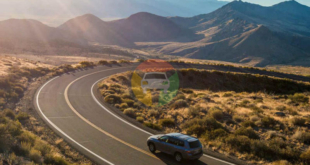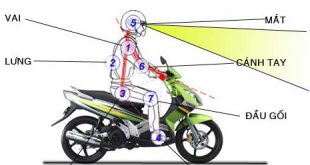Driving on sand is the process of driving a car on terrain made up of loose sand particles. This is a specialized driving technique that requires understanding the characteristics of sandy terrain and how to adjust the vehicle accordingly. Unlike regular road surfaces, sand has low adhesion, easily sinks and causes the car to get bogged.
Driving on sand is potentially dangerous, so you must keep a stable vehicle speed, prioritize driving in areas with previous tire tracks, limit steering combined with using the assistance system, and know how to Determine stopping points, handle when the vehicle gets bogged and limit driving in soft sand areas.
Prioritize choosing a car with a 4-wheel drive system (4WD) or a car with a rear-wheel drive system (RWD) to move on sandy terrain. Remember to check your vehicle and prepare rescue equipment carefully to prevent cases of bogging, skidding... Especially, when driving on sand at night, you need to be more careful, move slowly, and pay attention. Stay close, keep distance from the vehicle in front...
If you don't have experience traveling on sandy terrain, don't miss the article on Instructions for Driving a Car on Smooth Sand Without Bogged Down below!
How to drive a car on sand to avoid bogging down?
To drive safely on sand, you need to pay attention to keeping a stable speed, follow the tracks of the front wheels, use the assistance system, limit sudden steering, handle properly when moving on sand dunes, and ensure that your car is safe. Determine the appropriate stopping point and avoid getting bogged down, going into soft sand areas.
Keep the car speed steady
Keeping a steady speed when driving on sand is important so the wheels don't slip and lose traction from going too fast or get bogged down from going too slow. Limit sudden acceleration or deceleration, maintain a speed of about 40-60 km/h to help the vehicle have enough traction on the sand.
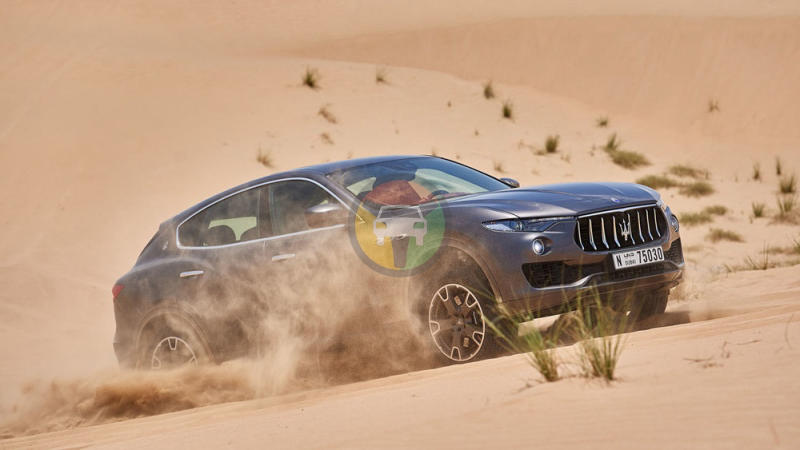
Some tips to help keep your vehicle speed stable include:
- Inflate tires to correct pressure.
- Using a low gear helps the engine provide more torque to the wheels, making it easier for the vehicle to move on sand.
- Pay attention to the terrain, avoid soft or rough sand areas.
Driving a car on sandy areas with front tire tracks
Drivers should drive according to the tire tracks of the vehicle in front or the location of hard sand, except for very deep tire tracks. Wheel tracks create small grooves in the sand, helping to increase tire grip, reduce the risk of slipping, getting bogged, save fuel and help the vehicle move more easily.
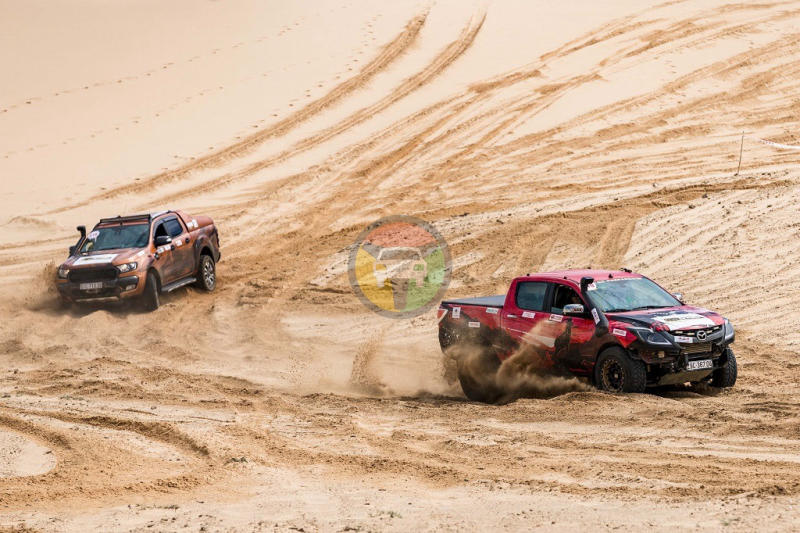
In addition, driving a car on front tire tracks also brings other outstanding benefits such as:
- Wheel tracks create a clear path, helping to control the vehicle easily and avoid going off course.
- Reduces the risk of accidents due to collisions with obstacles or getting bogged.
- Pay attention, choose to move according to wheel tracks with a width suitable for your vehicle.
Use support systems
Many modern vehicles are equipped with support systems such as anti-slip system (TCS), emergency brake assist system (EBA), hill start assist system (HSA), and downhill assist system. (HDC), traction control system (ATC). You may consider using these systems to make driving easier and safer on sandy land.
Avoid driving while driving on sand
Driving too much while driving on sand can lead to a number of risks:
- Loss of traction: Fine sand has low grip, sudden steering can cause the wheels to slip and lose traction, leading to bogging.
- Lose control: When the wheels lose traction, you may lose control of the vehicle, leading to the risk of a collision or rollover.
- Causes damage to the vehicle: Continuous driving in sand can cause damage to the suspension, tires and other vehicle components.
Handling when running on steep sand hills
If traveling on a sand hill with a low slope, run straight to form a 90-degree perpendicular line with the top of the sand hill. If the sand hill is too steep, you can consider a zigzag path to reduce the slope of the journey. Absolutely do not drive on an incline because it will reduce the vehicle's speed, cause sand bogs, make it impossible to reverse and easily overturn.
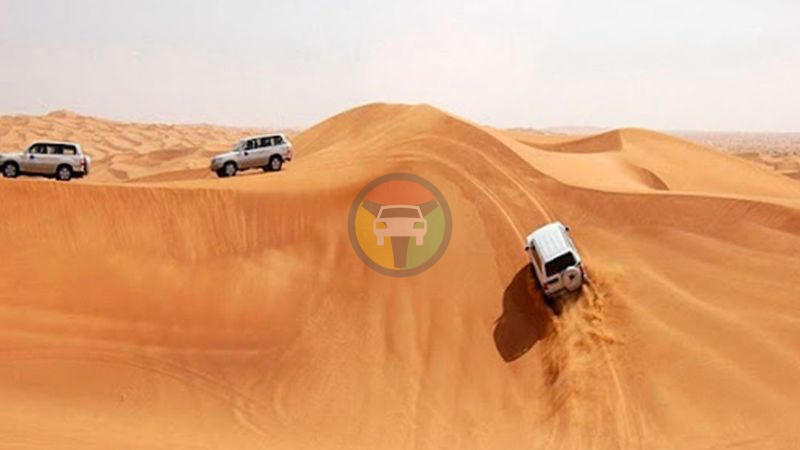
Determine where to stop the car when driving on sand
Determining where to stop a car when driving on sand is more difficult than when driving on asphalt. You should choose a stopping point in a high position with a downward slope to create momentum for the vehicle to start and run. If you choose to stop in a low-lying area, it will be difficult to start and easily get bogged down.
Note, hard sand will also be easier to start from than soft sand.
Handling when the car gets bogged in the sand
If you start to get bogged, stay calm and don't try to speed up because it's easy to bog the car deeper. Instead, try the following:
- Place a shovel or wooden board under the wheels to provide extra grip.
- Deflate your tires to increase the sand contact area
- Release the brake gently and slowly increase the throttle to try to move the vehicle with gentle traction.
- Steering left and right to create movement for the wheel to grip the sand better.
- If you still can't get out, you need to ask someone else for help to pull the car out of the bogged sand area.
Do not drive into soft sand areas
Soft sand has low grip, making it easy for vehicles to get bogged. Rescuing a vehicle mired in soft sand can take a lot of time and effort. Furthermore, traveling on soft sand can cause damage to tires, suspension and other vehicle components. Therefore, limit driving into soft sand areas unless required, there is no better way.
Issues Related to Driving a Car on Sand You Need to Know
It is recommended to use a vehicle with 4-wheel drive (4WD) or rear-wheel drive (RWD) to drive on smooth sand. Before driving, you need to check the vehicle's chassis, tires, bridges, cooling system, fuel, and prepare rescue equipment.
Drive carefully at night, slow down, keep a safe distance, use headlights, and be careful of obstacles.
What type of vehicle should I use to drive on smooth sand?
The type of vehicle commonly used to run on smooth sand is a car with a 4-wheel drive system (4WD) or a car with a rear-wheel drive system (RWD).
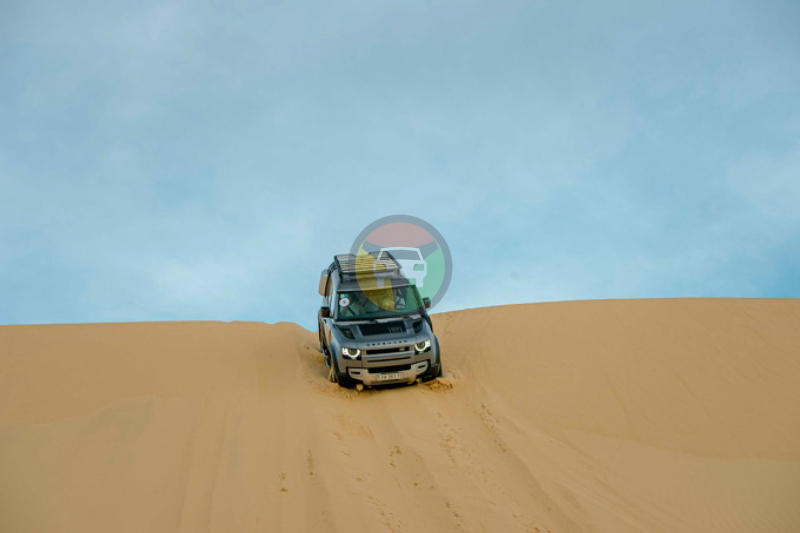
Characteristics of each type of vehicle:
- The vehicle has a 4-wheel drive system (4WD): Capable of transmitting power to all four wheels, helping to increase traction and better grip on smooth sand. 4WD easily overcomes sandy areas or rough terrain.
- Vehicles with rear-wheel drive (RWD): Also grips well on smooth sand, but not as good as 4WD. In return, RWD cars are more fuel efficient than 4WD.
Choosing which type of vehicle to run on smooth sand depends on your needs and budget.
What should I check before driving on sand?
Before driving on sand, you need to prepare rescue equipment and carefully check the vehicle's undercarriage, tires, bridges, cooling system, fuel, etc.
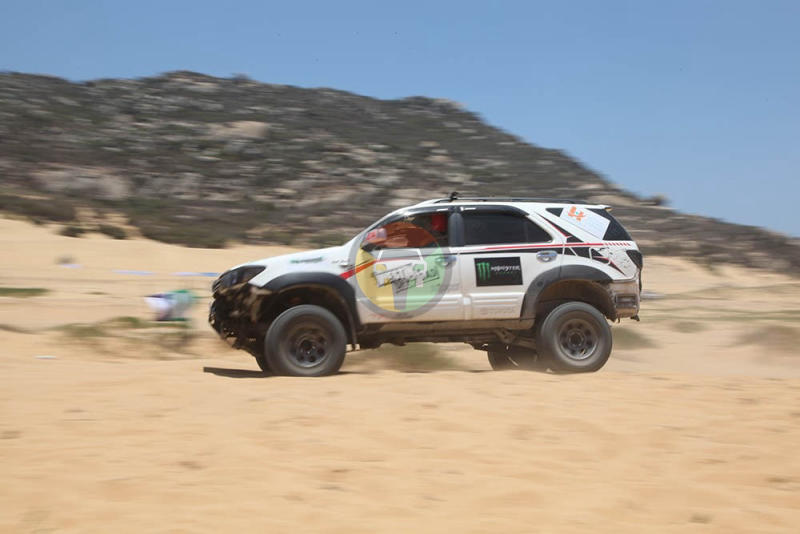
Things to check before driving on sand:
- Make sure the vehicle's chassis is high enough to move on sand. Low-slung vehicles are susceptible to sinking and getting stuck.
- Choose tires with large grooves and thick tread to increase grip in the sand. Reduce tire pressure to about 1-1.5 kg/cm2 to increase the contact area with sand.
- Turn on two-wheel drive mode (4WD) if available to help increase traction and reduce the risk of bogging.
- Check if the cooling system is working properly to avoid overheating the engine.
- Bring enough water and extra fuel as it can be difficult to move on the sand.
- At the same time, prepare full equipment such as vehicle chains, rescue cables, gloves, shovels and pads in case you get bogged.
What should you pay attention to when driving on sand at night?
Driving on sand at night is potentially more dangerous than during the day. Therefore you need to check the car carefully Be careful, slow down, keep a safe distance, use headlights, and be careful of obstacles to drive safely on sandy roads at night. As follows:
- Drive slower than during the day to have more time to react to unexpected situations.
- Keep a safe distance from other vehicles.
- Turn on headlights and underbody lights to increase visibility.
- Be careful of obstacles such as rocks, holes, or wild animals.
- Avoid driving through areas with difficult terrain or poor lighting.
- Be careful when driving through roads with wet sand or hoarfrost.
- Turn on your hazard lights to signal other vehicles if you encounter a problem.
- Call for help if your vehicle gets stuck or has a serious problem.
- Bring a cell phone so you can be contacted when needed.
Hopefully this article on Instructions for Driving a Car on Smooth Sand Without Bogged Down will be useful to you. Contact HCM Driving Training and Testing School to receive advice on additional driving skills, driver training support, and the most professional and effective car driving test.
 Driving test & training school in Ho Chi Minh City Training, teaching and driving test school in Ho Chi Minh City
Driving test & training school in Ho Chi Minh City Training, teaching and driving test school in Ho Chi Minh City



